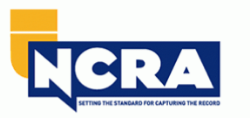Trial Presentation Providing Effective Case Information in Legal Proceedings
Grasping Trial Presentation: Tips for Engaging and Persuasive Courtroom Approaches
In the realm of trial presentation, the ability to involve and convince is vital. An effective court strategy depends upon comprehending the target market, crafting a compelling story, and employing efficient aesthetic help. Furthermore, the nuances of body language and the value of technique can not be ignored. Each of these components plays a critical role in shaping the jurors' perceptions and decisions. The difficulty lies in perfectly incorporating them right into a natural discussion. What techniques can absolutely boost a trial presentation from normal to phenomenal?
Understanding Your Target Market
To successfully master trial presentation, it is important to recognize your audience. Understanding their demographics, histories, and prospective biases can assist tailor your discussion to reverberate with them effectively.

A recognition of the court's preferences and court decorum is just as essential, as it can affect the flow of your discussion. Juries might prioritize brevity and quality, so offering your instance in a simple way can enhance your reliability. Additionally, identifying the opposing advise's strategies can help in preparing counterarguments that effectively resolve their points.
Inevitably, understanding your audience allows you to engage them more successfully, fostering connection and persuasion throughout the test (trial presentation). By leveraging understandings concerning their motivations and assumptions, you can produce a compelling presentation that resonates and ultimately influences the end result of the situation. This foundational expertise is necessary for any type of attorney aiming to accomplish success in the courtroom
Crafting an Engaging Narrative
A well-crafted story offers as the foundation of an effective test discussion, directing the target market via the complexities of the instance. This story needs to be structured to engage jurors mentally and intellectually, making the realities relatable and reasonable. By weaving together the aspects of the situation-- such as the timeline, key occasions, and essential statements-- lawyers can produce a coherent story that resonates with jurors.
To accomplish this, it is important to recognize the central themes that will certainly drive the story. Lawyers ought to concentrate on the motivations and objectives of the parties included, illustrating the human facets of the case (trial presentation). This technique not only keeps juror rate of interest however also promotes compassion, leading them to attach directly with the narrative
Additionally, using clear and succinct language is vital. Preventing legal jargon enables the audience to comprehend the vital factors without confusion. Each sector of the narrative ought to develop toward an engaging climax, culminating in a convincing final thought that strengthens the instance's core message. Inevitably, a solid narrative not only clears up the problems handy yet additionally produces a long-term impression that can influence the end result of the test.
Utilizing Visual Aids Effectively
Exactly how can visual aids improve the efficiency of a trial presentation? Visual aids serve as powerful tools that can significantly enhance juror understanding and retention of complicated information - trial presentation. When used attentively, they can clarify crucial factors, illustrate connections, and highlight essential evidence that supports the instance narrative
Efficient aesthetic help consist of charts, charts, timelines, and photos, which can streamline elaborate data and provide context. A timeline can succinctly convey the series of events, while a graph can highlight statistical information in an aesthetically engaging fashion. The strategic usage of multimedia discussions can also boost involvement and preserve juror interest throughout the test.
Additionally, visual help can assist to stimulate emotional reactions, enhancing the human elements of a case. By presenting pictures or video clips appropriate to the case, lawyers can create an extra engaging and relatable story. Nevertheless, it is important to make certain that visual help are expertly created and not overly complex, as this can lead to confusion as opposed to quality.
Engaging Body Language Methods
Visual aids are not the only devices that can improve the performance of a test presentation; involving body movement strategies also play an essential role in capturing juror attention and sharing confidence. A presenter's nonverbal hints can substantially affect jurors' perceptions and responses, making it necessary to understand these strategies.

In addition, varying your vocal tone and pace can enhance your storytelling, making it much this content more compelling. Stopping briefly tactically enables jurors to take in essential details and signifies the importance of what you are saying. Lastly, moving actively within the court room can aid enhance your factors, gave it does not sidetrack from your message.
Incorporating these body movement strategies will certainly not just improve your courtroom presence yet additionally promote a more persuasive link with jurors, inevitably adding to the success of your trial presentation.
Exercising for Influence
Efficient trial presentations pivot not only on the content yet additionally on the shipment, making practice important for effect. The relevance of rehearsal can not be overemphasized; it allows lawyers to refine their disagreements and develop a powerful existence in the courtroom. Taking part in calculated method helps lawyers to identify their toughness and weaknesses, enabling them to readjust their pacing, tone, and body language as necessary.
To practice for effect, imitate trial problems as very closely as possible. This includes making use of visual help, exercising in front of coworkers, and soliciting useful responses.

Final Thought
Grasping trial presentation involves a my response multifaceted approach that combines audience understanding, narrative growth, aesthetic help, and body language. Extensive method in simulated settings even more additional resources solidifies these strategies, guaranteeing that each presentation reverberates and leaves a long-term impact on the court.